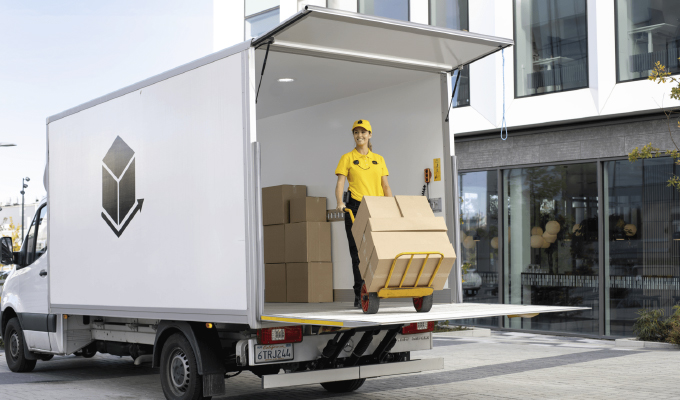Surveillance technologies, both on-site and in work trucks, play a crucial role in enhancing driver and work truck safety in numerous ways. By integrating on-site surveillance with vehicle surveillance systems, drivers, work crew and companies can achieve comprehensive coverage of the work environment. On-site cameras can be used to cover fixed locations such as site entrances, exits, and common areas, while truck-surveillance technology provides mobile coverage of different areas as trucks move around the site and of the operation of the vehicles. Together, they provide a comprehensive security and operational ecosystem that provides monitoring of all critical assets and enhances overall safety.
Enhanced situational awareness is of outmost importance to the modern work truck industry, for operators and companies. By integrating surveillance systems and related technologies, they are provided with real-time visibility into both the on-site environment and in and around the work trucks. This enhanced situational awareness enables personnel to detect and respond to incidents more effectively, whether they occur at fixed/remote locations, or involve mobile assets like the work trucks.
According to the Canadian Centre for Occupational Health and Safety (CCOHS), in the construction industry, which involves the use of work trucks, the leading causes of fatalities are falls, being struck by objects or work truck vehicles, electrocutions, and caught-in/between accidents, like trends seen in other countries. By integrating work truck surveillance with on-site surveillance systems, drivers and companies can create a seamless security and safety infrastructure that provides comprehensive protection for both personnel and assets.
CENTRALIZED MONITORING
Work truck surveillance systems, often equipped with onboard cameras and GPS tracking, feed data to a centralized monitoring station. This camara station can be located on-site or remotely managed by security personnel. It is powerful and easy to use with an intuitive interface so anyone can manage the system, handle incidents and quickly export high-definition evidence.
Some stations also include access control management as part of its seamless, user-friendly interface and this is ideal for work sites. Work truck surveillance systems can be integrated with on-site access control systems to regulate entry and exit of vehicles from the work site. Access control measures such as radio frequency identification (RFID) readers or biometric scanners can be used to authenticate drivers and ensure only authorized personnel have access to the trucks.
Camera stations can help do more than manage cameras and control building access. It is easy to add features like network speakers to communicate with staff and deter intruders, network intercoms for audiovisual identification and remote entry control, body worn solutions for individual driver protection, evidence collection and for monitoring by private security and law enforcement, analytics to improve driver/operator efficiency, radar to follow intruders and strobe sirens for safety and deterrence.
More advanced cameras such as thermals can also monitor for thermal runaway in electrified fleets, helping to prevent large scale accidents in lots where similar vehicles are parked closely together. Additional cameras with integrated radar can monitor the speed of vehicles and generate warnings on speeding, helping to avoid accidents on site. Today’s stations can be remotely accessed by security personnel who are able to view live video feeds and vehicle tracking data from work trucks remotely using mobile devices or desktop computers. This allows for continuous monitoring of truck activities even when personnel are not physically present at the central monitoring station.
Good camera stations should be future-proof and allow for integration. They can be upgraded with new possibilities all the time to better protect premises, work trucks and their drivers and to make their life easier.

REAL-TIME MONITORING
Live video feeds from onboard cameras in work trucks can transmit to the central monitoring station, where personnel can monitor the trucks’ surroundings in real-time. This allows for immediate response to any security threats or incidents encountered by the trucks while on the move. GPS tracking data from work trucks can also be synchronized with on-site surveillance systems, providing precise location information for each vehicle. This integration enables security personnel to track the movement of trucks within the work site and ensure they remain within authorized zones.
EVENT-BASED ALERTS
Work truck onboard surveillance systems can be configured to trigger event-based alerts based on predefined criteria, such as unauthorized access attempts, vehicle tampering, or sudden changes in speed or direction. These alerts can then transmit to the central monitoring station, enabling company personnel to respond promptly to potential security breaches. As part of an end-to-end security system, stored surveillance footage and GPS tracking data from work trucks can be accessed for review or investigation purposes as needed. This comprehensive data storage capability ensures that a detailed record of all truck activities is maintained, facilitating post-incident analysis and resolution.

OVERALL SAFETY CULTURE
By integrating work truck surveillance with on-site surveillance systems, companies can create a seamless security and safety infrastructure that provides comprehensive protection for both personnel and assets. This integrated approach enhances situational awareness, enables proactive security measures, and facilitates rapid response to security incidents, ultimately enhancing overall safety and security of work truck driver and at the work truck site.
When companies who operate work truck and public works demonstrate a commitment to driver safety through the implementation of surveillance systems, they can foster a culture of accountability and responsibility among drivers and employees. Knowing that their actions are being monitored can encourage drivers to prioritize safety and adhere to company policies and procedures more diligently.
ABOUT THE AUTHOR
Jason Chiu is the professional services group manager with Axis Canada. He has a background in IT and networking and has spent over 15 years in the security industry, from being an integrator, consultant, and manufacturer. He is an ASIS board Certified Protection Professional and Physical Security Professional. Trained in Critical Infrastructure Protection, and Crime Prevention Through Environmental Design (Levels 1 and 2).




